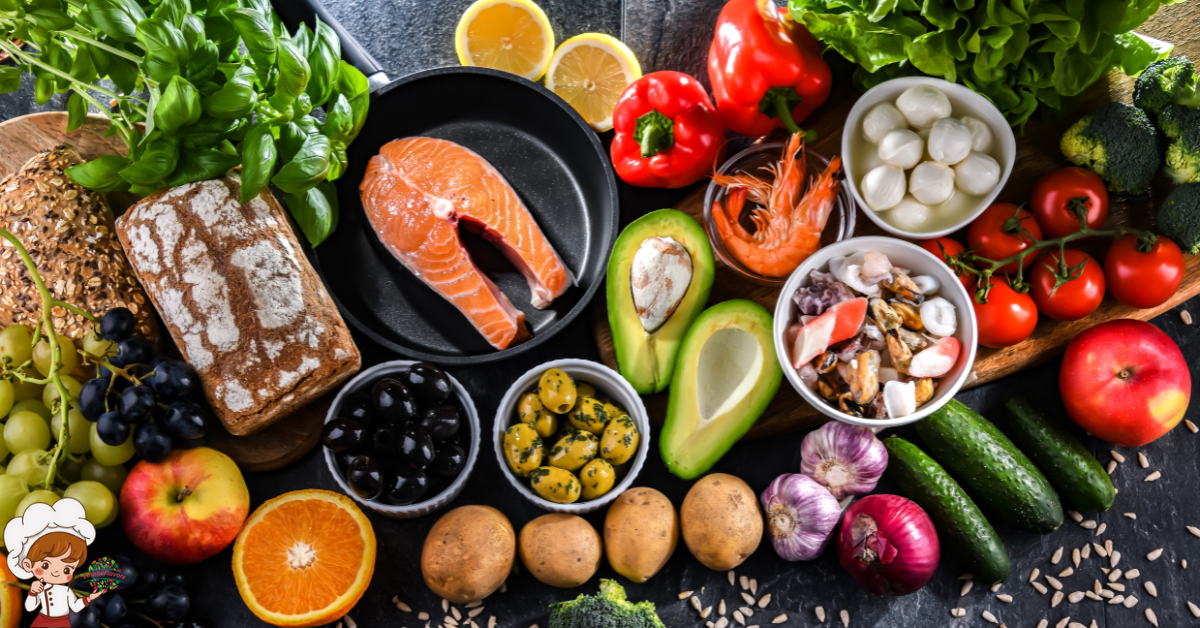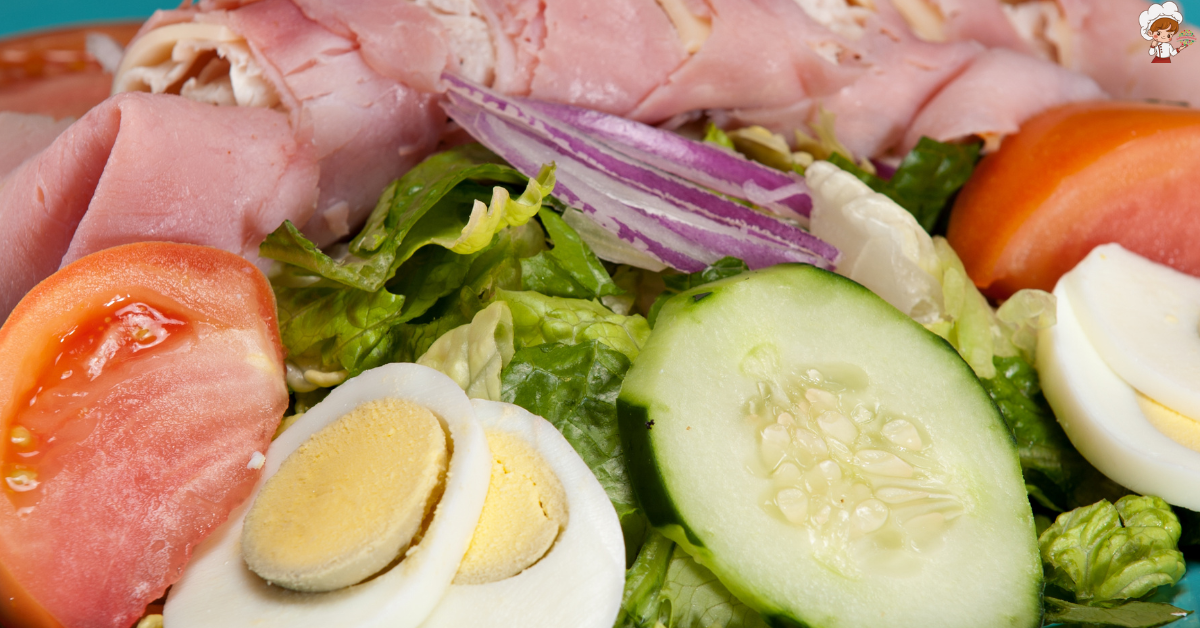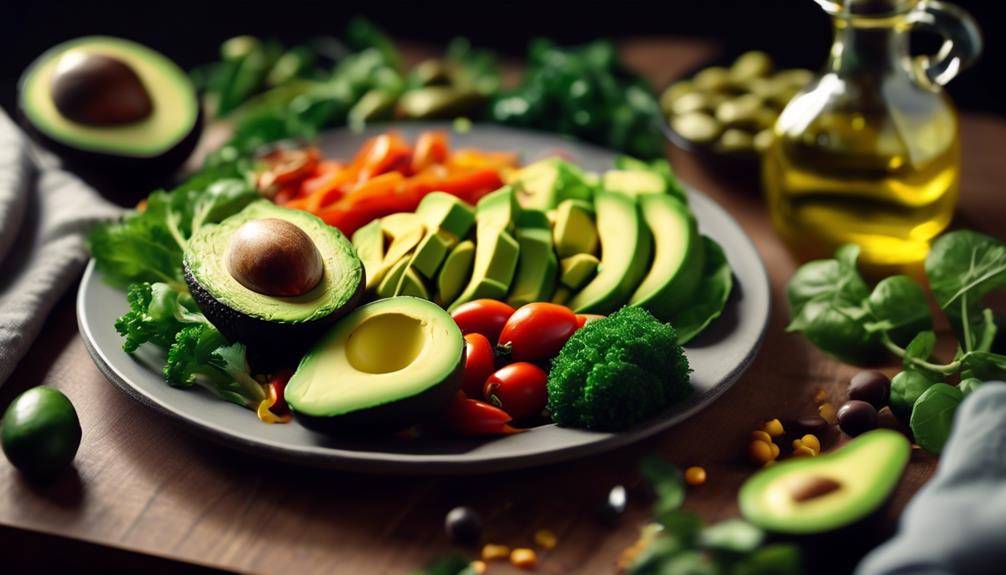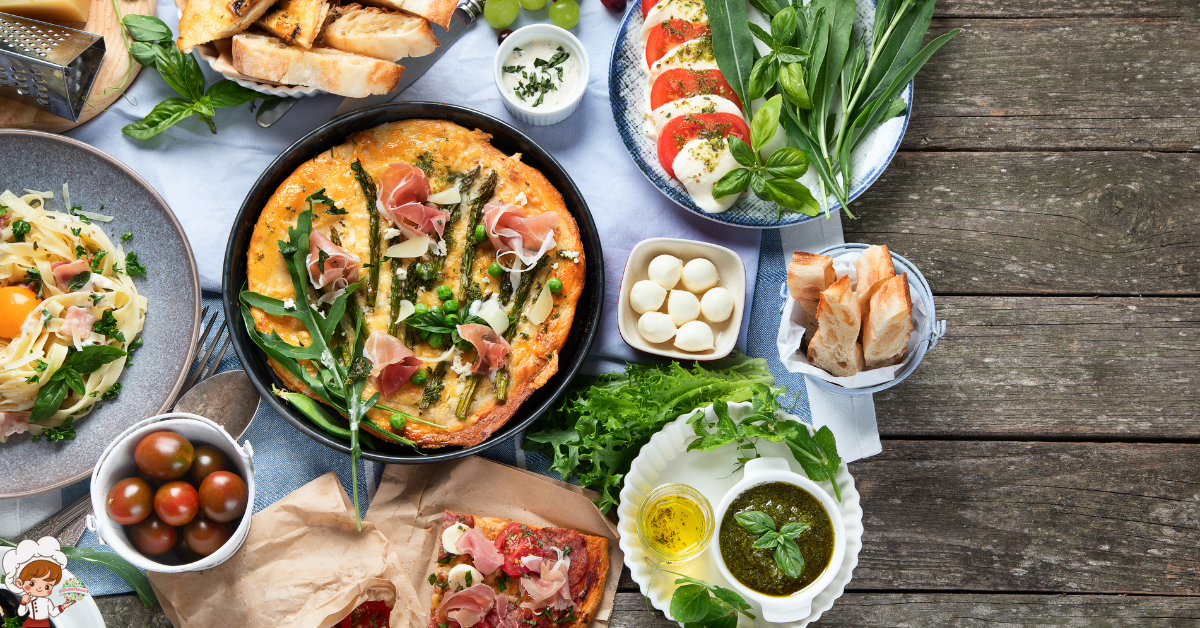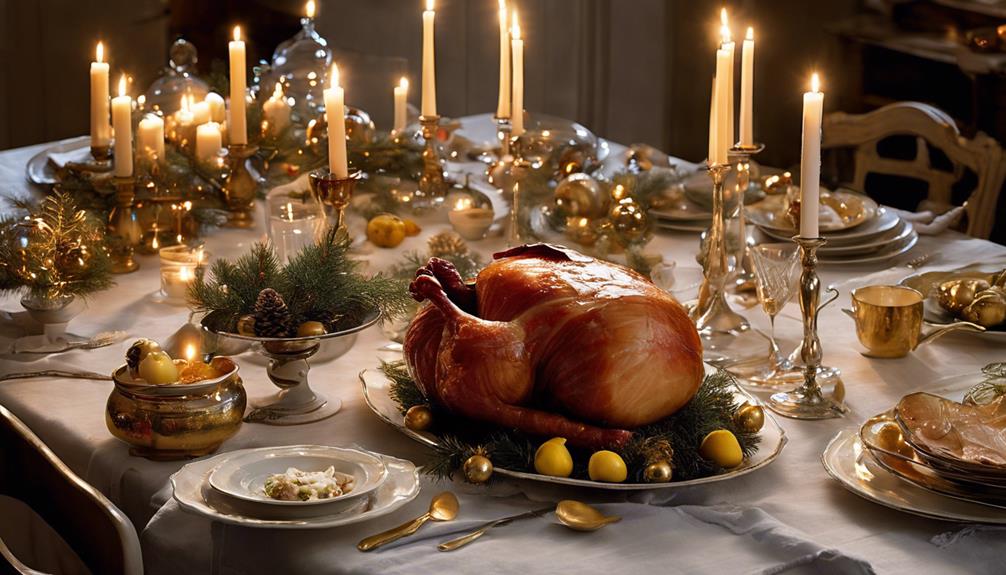The Best Lebanese Desserts And Sweets

Have you ever had the pleasure of indulging in the sweet delicacies of Lebanon? The world of The Best Lebanese Desserts And Sweets is a tantalizing journey waiting to be explored. From the intricately layered Baklava to the exquisite Ma’amoul, each treat offers a unique blend of flavors and textures that will leave your taste buds craving for more.
But that’s not all, as we delve deeper into the realm of Lebanese desserts, you will discover the richness of Halva, the irresistible Knafeh, the tempting Date Cookies, and the heavenly Lebanese Ice Cream. And let’s not forget the delightful fruit desserts that will transport you to a world of pure bliss. Whether it’s a special occasion or simply a desire to satisfy your sweet tooth, Lebanese desserts are sure to leave a lasting impression. So, get ready to embark on a delectable journey through the world of Lebanese sweets.
Traditional Lebanese Sweet Delights
Indulge your taste buds with an array of delectable traditional Lebanese sweet delights. Lebanon is known for its rich culinary heritage, and its desserts are no exception. One of the most popular traditional Lebanese sweet treats is the traditional Lebanese ice cream, also known as “booza.” Made with a unique combination of milk, sugar, and mastic resin, this ice cream is renowned for its creamy texture and distinct flavor. The mastic resin gives it a subtle pine-like taste, setting it apart from regular ice cream.
But Lebanese desserts don’t stop at ice cream. The country is also famous for its unique Lebanese pastries. These pastries are a delightful blend of flavors and textures, combining the sweetness of honey or sugar syrup with the richness of nuts and butter. One such pastry is the baklava, a layered dessert made with thin sheets of filo pastry, filled with a mixture of crushed nuts, sugar, and spices, and drenched in a sweet syrup. The combination of the flaky pastry, crunchy nuts, and sweet syrup creates a heavenly dessert that is impossible to resist.
Another popular Lebanese pastry is ma’amoul, a delicate cookie-like treat filled with dates, pistachios, or walnuts. These little delights are usually enjoyed during special occasions and holidays and are often served with a cup of Arabic coffee. The intricate designs on the ma’amoul reflect the care and attention that goes into making these treats, making them not just delicious but also visually appealing.
Lebanese sweet delights are a testament to the country’s culinary prowess and cultural heritage. From the creamy traditional Lebanese ice cream to the intricate and flavorful Lebanese pastries, these desserts are sure to leave you craving for more. So, why not treat yourself to a taste of Lebanon’s sweet side and experience the indulgence firsthand?
The Art of Making Baklava
As you explore the realm of Lebanese desserts, one delicacy that stands out is the art of making baklava, a layered dessert that captivates with its exquisite flavors and textures. The traditional baklava recipe has been passed down through generations, and its preparation requires precision and patience. To create this delectable treat, you will need a mixture of finely chopped nuts, such as walnuts, pistachios, or almonds, combined with sugar, cinnamon, and a hint of orange blossom water.
The first step in making baklava is to prepare the buttery phyllo dough. Layer after layer, the dough is brushed with melted butter, creating a flaky and crispy texture that contrasts perfectly with the sweet filling. Once the dough is layered, it is time to add the filling. There are various types of baklava fillings, each offering a unique taste experience. Some popular options include a mixture of ground pistachios and sugar, or a combination of walnuts, cinnamon, and honey.
After adding the filling, the baklava is cut into diamond or square shapes before being baked to a golden brown perfection. Once out of the oven, a simple syrup, made of sugar, water, and a touch of lemon juice, is poured over the hot baklava, soaking into the layers and adding a sweet and tangy flavor. The baklava is then left to cool, allowing the flavors to meld together, creating a dessert that is both crunchy and chewy, sweet and nutty.
The art of making baklava is a true labor of love, requiring skill and craftsmanship. With its delicate layers and flavorful fillings, it is no wonder that baklava holds a special place in Lebanese cuisine. So, venture into this sweet realm and indulge in the art of making baklava, a dessert that is sure to delight your taste buds.
Indulge in Ma’amoul: A Lebanese Delicacy
With its delicate pastry crust and rich, flavorful fillings, Ma’amoul is a cherished Lebanese delicacy that will transport you to a world of sweet indulgence. This traditional dessert is a labor of love, with its intricate design and mouthwatering taste. Ma’amoul is typically made during special occasions such as Eid or Christmas, where families come together to celebrate and savor its delightful flavors.
To make Ma’amoul, you will need to start with a traditional Ma’amoul recipe that has been passed down through generations. The dough is made from a combination of semolina, flour, butter, and rosewater, creating a tender and crumbly crust. It is then shaped into small balls or pressed into special molds to create beautiful patterns on the surface.
The real magic of Ma’amoul lies in its filling options. The most common fillings include dates, pistachios, and walnuts. The dates are first soaked in rosewater and then blended into a smooth paste, creating a sweet and fragrant filling. The pistachios and walnuts are finely ground and mixed with sugar, creating a crunchy and nutty filling that pairs perfectly with the buttery pastry.
Once the filling is added, the Ma’amoul is baked until golden brown and then dusted with powdered sugar. The result is a heavenly treat that melts in your mouth and leaves you craving for more. Whether you choose the sticky sweetness of the date-filled Ma’amoul or the nutty crunch of the pistachio-filled one, each bite is a sensory delight that captures the essence of Lebanese cuisine.
Indulge in Ma’amoul and experience the irresistible combination of textures and flavors. Let this Lebanese delicacy transport you to a world of sweet indulgence, where every bite is a celebration of tradition and craftsmanship.
Exploring the Richness of Lebanese Halva
Transport yourself further into the world of Lebanese desserts by exploring the richness of Lebanese Halva, a delectable treat that will captivate your taste buds with its unique flavors and textures. Halva is a traditional sweet that has been enjoyed in Lebanon for centuries. Made from simple ingredients like ground sesame seeds, sugar, and various flavorings, halva comes in a variety of forms, each with its own distinct taste. Here are four reasons why you should indulge in Lebanese halva:
- Authentic Recipes: Lebanese halva is made using traditional recipes that have been passed down through generations. The process involves carefully roasting and grinding sesame seeds to create a smooth and creamy texture. The addition of sugar and other ingredients like pistachios, almonds, or chocolate creates a flavor profile that is both sweet and nutty.
- Rich in Nutrients: Halva is not only delicious but also packed with health benefits. Sesame seeds, the main ingredient in halva, are a good source of protein, healthy fats, and essential minerals like calcium and iron. These nutrients contribute to bone health, muscle function, and overall well-being.
- Energy Boost: Halva is a great source of energy due to its high sugar and fat content. It provides a quick burst of energy, making it an ideal snack for those in need of a pick-me-up. Whether you’re hiking, working out, or simply need a sweet treat to satisfy your cravings, halva is a perfect choice.
- Versatility: Lebanese halva can be enjoyed in various ways. It can be sliced and eaten as it is, crumbled over desserts or breakfast dishes, or used as a filling in pastries and cakes. Its versatility allows you to explore different flavor combinations and experiment with recipes.
A Taste of Lebanon: Knafeh
Indulge your taste buds in the culinary delight of Knafeh, a Lebanese dessert that will transport you to the vibrant streets of Beirut with its sweet and savory flavors. Knafeh, also known as Kunafa or Kanafeh, is a beloved traditional dessert that holds a special place in Lebanese cuisine. This delectable treat consists of crispy layers of shredded phyllo dough, also known as kataifi, filled with a creamy cheese filling, and soaked in a fragrant rosewater syrup.
To make a traditional knafeh, start by preparing the cheese filling, which is typically made from a combination of akkawi and mozzarella cheese. The cheese is mixed with a touch of sugar and a hint of orange blossom water, giving it a unique flavor profile. The shredded phyllo dough is then layered on top of the cheese mixture, creating a beautiful, golden crust when baked.
While the classic knafeh recipe is widely popular, there are also various regional and personal variations of this dessert. Some variations include the addition of pistachios or almonds, which add a crunch and nuttiness to the dish. Others may choose to drizzle the knafeh with a rich, sweet syrup made from honey or date molasses, adding another layer of complexity to the flavors.
No matter the variation, one thing remains constant – the sheer indulgence of biting into a warm slice of knafeh, with its contrasting textures and harmonious blend of sweet and savory flavors. So, take a bite and let the taste of Lebanon whisk you away to the bustling streets of Beirut, where the aroma of freshly baked knafeh fills the air.
Discovering the Sweetness of Lebanese Atayef
Prepare to be enchanted by the delectable sweetness of Lebanese Atayef as you embark on a culinary journey through the rich flavors of Lebanon. Atayef, also known as qatayef, is a popular dessert during the holy month of Ramadan and festive occasions. These delectable pancakes are filled with a variety of indulgent fillings and topped with delightful accompaniments. Here is a guide to the enchanting world of Lebanese Atayef:
- Atayef Fillings:
- Ashta: This creamy, sweet cheese filling made from clotted cream and rose water is a classic choice for Atayef. It adds a luscious texture and a delicate floral note to the pancakes.
- Nuts: Crushed pistachios, walnuts, or almonds mixed with sugar and spices create a delightful crunchy filling. The nutty flavors add depth and a satisfying contrast to the softness of the pancakes.
- Nutella: For a modern twist, Atayef can be filled with a generous dollop of Nutella. The rich and creamy chocolate-hazelnut spread takes the sweetness to another level, making it a favorite among chocolate lovers.
- Dates: A traditional Middle Eastern ingredient, dates are often used to fill Atayef. Their natural sweetness and soft texture make for a delightful and healthy option.
- Atayef Toppings:
- Sugar Syrup: A drizzle of fragrant sugar syrup adds a touch of sweetness and moisture to the Atayef. The syrup is usually infused with rose water or orange blossom water, imparting a wonderful aroma.
- Crushed Pistachios: Finely chopped pistachios sprinkled on top of the Atayef not only add a vibrant pop of color but also enhance the overall flavor profile with their nutty and earthy notes.
- Honey: A decadent alternative to sugar syrup, honey can be drizzled over the Atayef, adding a rich and natural sweetness that complements the other flavors.
- Shredded Coconut: For a tropical twist, shredded coconut can be sprinkled on top of the Atayef, adding a delicate crunch and a hint of exotic flavor.
Discovering the sweetness of Lebanese Atayef is a delightful experience that will transport your taste buds to the vibrant and diverse culinary world of Lebanon. Whether you choose classic fillings like ashta and nuts or opt for more modern twists like Nutella, these pancakes are sure to satisfy your sweet cravings. So, indulge in the enchantment of Atayef and savor the rich flavors of Lebanon.
Savor the Flavors of Lebanese Osmalieh
As you continue your culinary journey through Lebanese desserts, allow yourself to be captivated by the exquisite flavors of Lebanese Osmalieh. This delicate and indulgent sweet treat is a true delight for the senses. Osmalieh is made from vermicelli pastry, also known as kataifi, which is shredded into thin strings and then baked until golden and crispy. The pastry is then soaked in a sweet sugar syrup infused with rose water, giving it a fragrant and floral aroma that is characteristic of Lebanese desserts.
To make the perfect osmalieh, start with a simple recipe that requires minimal ingredients. Begin by mixing butter with the shredded kataifi pastry, making sure to coat each strand evenly. Then, layer the buttered pastry in a baking dish and bake until it turns golden brown and crispy. While the pastry is baking, prepare a sugar syrup flavored with rose water. Once the pastry is done, pour the syrup over it, allowing it to soak in and infuse the osmalieh with its sweet and floral essence.
While the classic osmalieh recipe is a true delight on its own, there are also variations of this Lebanese dessert that add a unique twist to the flavors. Some variations include adding crushed pistachios or almonds on top of the osmalieh, adding a crunchy texture and nutty flavor to the sweet dish. Others may choose to drizzle a layer of melted white chocolate over the osmalieh, adding a creamy and decadent element to the dessert.
No matter how you choose to enjoy it, Lebanese osmalieh is a dessert that will transport you to the vibrant and flavorful world of Lebanese cuisine. So indulge in its delicate and sweet flavors, and let it be the perfect ending to your culinary adventure.
The Delicate Delight of Lebanese Nammoura
You’re in for a treat as we explore the delicate delight of Lebanese Nammoura. Get ready to discover the traditional recipe variations, the key ingredients and the meticulous preparation that goes into creating this sweet masterpiece. From the perfect balance of semolina, sugar, and rose water to the artful serving and presentation, Nammoura is a dessert that will captivate your senses.
Traditional Recipe Variations
Indulge in the delicate delight of Lebanese Nammoura, a traditional dessert that captivates with its rich flavors and enticing textures. This mouthwatering treat has been passed down through generations, with each family adding their own unique touch to the recipe. The traditional recipe variations of Nammoura reflect the cultural influences that have shaped Lebanese cuisine over the years. Here are four variations that showcase the diversity and creativity in preparing this delectable dessert:
- Orange Blossom Nammoura: Infused with the delicate essence of orange blossoms, this variation adds a refreshing twist to the classic recipe.
- Pistachio Nammoura: For those who love the nutty flavor, this version incorporates finely ground pistachios into the batter, giving it a delightful crunch.
- Rosewater Nammoura: Fragrant and floral, this variation uses rosewater to infuse the dessert with a subtle, perfumed taste.
- Chocolate Nammoura: A modern twist on the traditional recipe, this version adds a rich chocolatey flavor to the mix, satisfying the cravings of chocolate lovers.
These traditional recipe variations not only add depth to the flavors of Lebanese Nammoura but also showcase the cultural influences that have shaped Lebanese cuisine. Whether you prefer the traditional recipe or one of its variations, Lebanese Nammoura is sure to delight your taste buds and leave you longing for more.
Ingredients and Preparation
To create the delicate delight of Lebanese Nammoura, gather the essential ingredients and follow the precise steps of preparation for a truly authentic and mouthwatering experience. Nammoura is one of the most popular Lebanese dessert recipes, known for its rich flavors and irresistible sweetness. The key ingredients include semolina, sugar, yogurt, butter, and rosewater, which come together to create a moist and aromatic cake.
The preparation begins by mixing the semolina with yogurt and sugar until a smooth batter is formed. The mixture is then poured into a greased baking dish and baked to perfection. Once golden brown, a sweet syrup made from sugar, water, and rosewater is poured over the hot cake, allowing it to absorb the fragrant flavors. Finally, it is garnished with crushed pistachios for a touch of color and added texture. The result is a delectable treat that showcases the exquisite taste of traditional Lebanese sweets.
Serving and Presentation
Enhance the experience of enjoying the delicate delight of Lebanese Nammoura by presenting it with a touch of elegance and artistry. Here are some serving techniques and plating ideas to elevate the visual appeal of this traditional dessert:
- Garnish with Pistachios: Sprinkle finely chopped pistachios on top of the Nammoura to add a pop of green color and enhance the nutty flavor.
- Drizzle with Syrup: Generously pour a sweet syrup made from rose water and orange blossom water over the Nammoura, creating a glossy and fragrant coating.
- Serve with Rose Petals: Place a few fresh rose petals around the plate to create a romantic and visually stunning presentation.
- Accompany with Fresh Fruits: Arrange slices of fresh fruits like strawberries, oranges, or pomegranates alongside the Nammoura to provide a refreshing contrast and balance the sweetness of the dessert.
Tempting Treats: Lebanese Date Cookies
Looking to satisfy your sweet tooth with a delectable Lebanese treat? Look no further than the tantalizing flavors of Lebanese date cookies. These mouthwatering treats are made using traditional recipes that have been passed down through generations, ensuring an authentic and unforgettable taste experience.
Lebanese date cookies are made with a simple yet perfect combination of ingredients. The star of the show is the date, a sweet and sticky fruit that is a staple in Lebanese cuisine. Dates not only add a natural sweetness to the cookies but also provide numerous health benefits. They are a great source of fiber, potassium, and antioxidants, making these cookies a guilt-free indulgence.
To make these cookies, the dates are mixed with other ingredients such as butter, flour, and a touch of cinnamon. The mixture is then rolled into small balls and baked until golden brown. The result is a soft and chewy cookie with a rich date flavor that will have you reaching for seconds.
One bite into these Lebanese date cookies and you will be transported to the vibrant streets of Beirut, where these treats are commonly enjoyed with a cup of strong Arabic coffee. The combination of the sweet date filling and the buttery cookie dough creates a perfect balance of flavors that is sure to satisfy your cravings for something sweet.
Whether you are a fan of Middle Eastern cuisine or simply looking to try something new, Lebanese date cookies are a must-try treat. With their traditional recipes and health benefits, these cookies offer a taste of Lebanon’s culinary heritage while providing a guilt-free indulgence for your sweet tooth. So go ahead, treat yourself to the irresistible flavors of Lebanese date cookies. You won’t be disappointed.
Heavenly Lebanese Ice Cream
Indulge in the heavenly delight of Lebanese ice cream, a creamy and flavorful treat that will transport your taste buds to the vibrant streets of Lebanon. Lebanese ice cream is known for its unique flavors and cultural significance. Here are four reasons why this frozen dessert is truly a culinary masterpiece:
- Rich and Creamy Texture: Lebanese ice cream is made using a traditional recipe that involves slow churning with mastic resin. This process gives it a distinctively thick and creamy texture that sets it apart from other ice creams. As you take a spoonful, you’ll immediately notice the smoothness and velvety feel that melts in your mouth.
- Unique Flavors: Lebanese ice cream offers a wide range of unique and exotic flavors that reflect the diversity of Lebanese cuisine. From traditional flavors like pistachio, rose water, and saffron to more adventurous combinations like cardamom and orange blossom, each scoop is a burst of deliciousness that tantalizes your taste buds.
- Natural Ingredients: One of the reasons Lebanese ice cream is so special is its commitment to using high-quality, natural ingredients. Fresh milk, cream, and real fruits are carefully selected to ensure the highest level of flavor and authenticity. Each ingredient is thoughtfully chosen to create a harmonious blend of flavors that is both refreshing and satisfying.
- Cultural Significance: In Lebanon, ice cream holds a special place in the hearts of its people. It is often served during celebrations and gatherings, symbolizing joy and togetherness. Lebanese ice cream shops, known as “mouhallabiyas,” are popular social hubs where families and friends gather to enjoy this beloved dessert.
Lebanese ice cream is not just a frozen treat; it is a culinary experience that embodies the rich history and vibrant culture of Lebanon. So, the next time you have a craving for something sweet and refreshing, treat yourself to the heavenly delight of Lebanese ice cream and savor every spoonful.
Delightful Lebanese Fruit Desserts
If you’re a fan of fresh and vibrant flavors, get ready to tantalize your taste buds with the delightful array of Lebanese fruit desserts. Lebanese cuisine is known for its use of fresh fruits and herbs to create unique twists on traditional desserts. From refreshing fruit salads to indulgent fruit-based delicacies, Lebanese fruit desserts are a true delight for both the eyes and the palate.
One popular Lebanese fruit dessert is called “Mouhalabieh,” a creamy pudding made with milk, sugar, and fragrant rose water. This dessert is often topped with a medley of fresh fruits such as strawberries, kiwi, and pomegranate seeds, adding a burst of color and sweetness to the dish. The combination of the creamy pudding and the vibrant fruits creates a harmonious balance of flavors that is simply irresistible.
Another Lebanese fruit dessert that is worth trying is “Atayef,” a type of stuffed pancake typically enjoyed during the holy month of Ramadan. These small pancakes are filled with a mixture of finely chopped fruits such as bananas, apples, and oranges, and are then folded and fried until golden brown. The result is a warm and gooey treat that is bursting with fruity goodness.
For those who prefer a lighter option, Lebanese fruit salads are a popular choice. These salads often feature a colorful assortment of fruits, such as watermelon, pineapple, grapes, and oranges, tossed together with a drizzle of honey and a sprinkle of fresh mint leaves. The combination of sweet and tangy flavors, along with the refreshing crunch of the fruits, makes these salads a perfect choice for a hot summer day.
Unforgettable Lebanese Desserts for Special Occasions
When it comes to special occasions, Lebanese cuisine offers an array of unforgettable desserts that are sure to leave a lasting impression. Lebanese dessert recipes are known for their rich flavors, unique ingredients, and exquisite presentation. Whether you’re celebrating a birthday, anniversary, or any other special event, these Lebanese desserts will add a touch of elegance and indulgence to your festivities.
- Kunafa: This iconic Lebanese dessert is a favorite among locals and visitors alike. It consists of a layer of thin, crispy pastry topped with a creamy cheese filling and soaked in a sweet sugar syrup. The combination of textures and flavors is simply divine.
- Maamoul: These delicate, buttery cookies are a staple during festive occasions such as Eid. They are usually filled with dates, pistachios, or walnuts and are beautifully shaped using traditional wooden molds. The intricate designs make them a true work of art.
- Halawet el Jibn: Translating to “sweetness of cheese,” this dessert is a decadent treat made from a creamy cheese dough filled with clotted cream and drizzled with orange blossom syrup. The contrast between the sweet syrup and the creamy filling is a true delight for the senses.
- Znoud el Sit: Literally meaning “ladies’ arms,” these delicate pastries are made by wrapping thin layers of phyllo dough around a creamy filling of custard or clotted cream. They are then deep-fried until golden and crispy, and served with a generous dusting of powdered sugar.
Unique Lebanese dessert ingredients such as rose water, orange blossom water, and pistachios add a distinct Middle Eastern touch to these special occasion treats. Whether you choose to make these desserts at home or enjoy them at a Lebanese restaurant, they are sure to impress your guests and create unforgettable memories.
The Best Lebanese Desserts And Sweets; Frequently Asked Questions
Are Lebanese Desserts Always Very Sweet?
Are Lebanese desserts always very sweet? They cater to different taste preferences. Some are rich and indulgent, while others are lighter and more delicate. So no, not all Lebanese desserts are overly sweet.
What Are the Main Ingredients Used in Traditional Lebanese Sweet Delights?
When making traditional Lebanese sweet delights, the main ingredients you’ll find are nuts, such as pistachios and walnuts, as well as fragrant spices like cinnamon and rose water. These flavors create a rich and aromatic experience.
How Is Baklava Different in Lebanon Compared to Other Countries?
In Lebanon, baklava variations are unique compared to other countries. The cultural significance of this sweet treat is evident in the delicate layers of phyllo dough, rich nut fillings, and aromatic syrup.
Are Ma’amoul Cookies Difficult to Make at Home?
Making ma’amoul cookies at home can be challenging, but there are shortcuts to simplify the process. Traditional variations of ma’amoul include fillings like dates or pistachios. With practice and the right ingredients, you can enjoy these delicious treats.
Can You Find Lebanese Desserts in Other Countries Outside of Lebanon?
You can find Lebanese desserts in various countries outside of Lebanon. They are becoming increasingly available due to the popularity of Middle Eastern cuisine. Each country adds its own unique variations to these delightful sweets.
Conclusion
Lebanese desserts and sweets offer a delightful journey into the rich flavors and traditions of this vibrant cuisine. From the delicate layers of baklava to the indulgent sweetness of ma’amoul, each treat is crafted with love and expertise. The mouthwatering knafeh, the delectable date cookies, and the heavenly Lebanese ice cream all leave a lasting impression. Whether it’s a special occasion or simply a craving for something sweet, Lebanese desserts are sure to satisfy and leave you wanting more.



